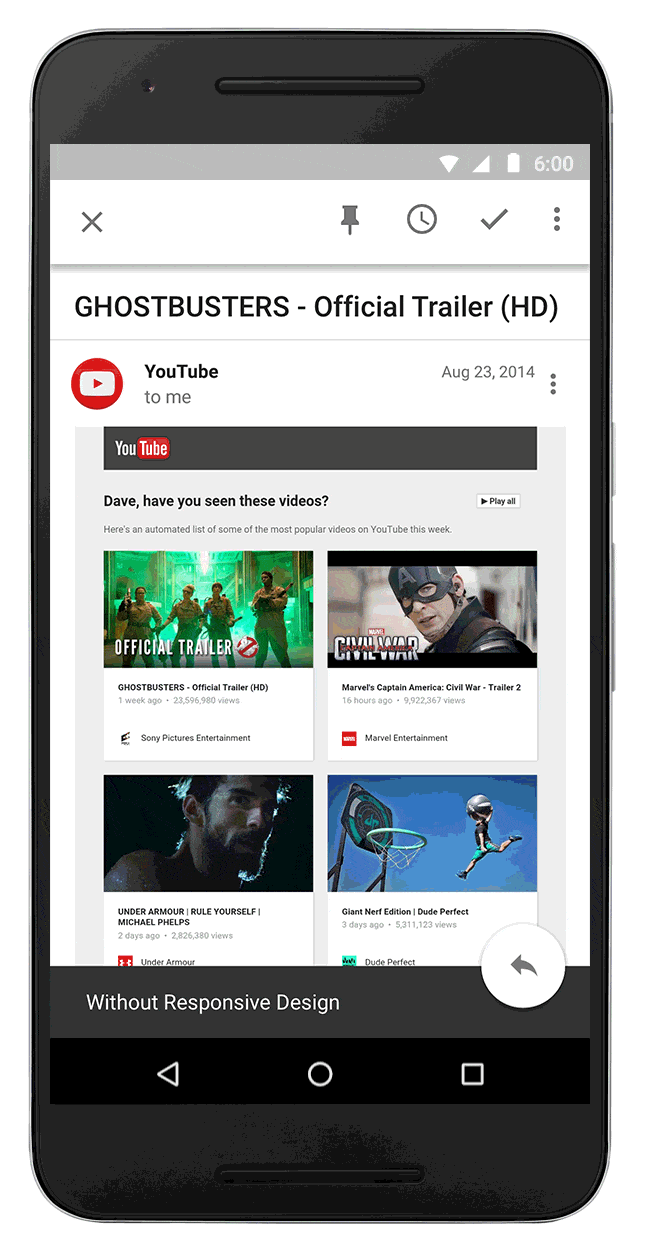

- #DREAMWEAVER RESPONSIVE EMAIL FOR GMAIL TUTORIAL HOW TO#
- #DREAMWEAVER RESPONSIVE EMAIL FOR GMAIL TUTORIAL UPGRADE#
Remember, you’re only working on one HTML file, but because Dreamweaver creates three sets of styles, you can rearrange and resize the elements to create three different layouts.

When you change from one layout to another, the corresponding CSS is applied to the document displayed in Dreamweaver’s workspace. Step 3Īt the bottom of the workspace, you can switch from one layout to the other, using three tiny icons which represent the Mobile size, Tablet size, and Desktop size designs. Note that the HTML file that Dreamweaver generates is not saved in this initial step. Simultaneously, Dreamweaver saves a boilerplate CSS style sheet, and a Javascript file, which are listed in the top of the workspace. When you click Create, Dreamweaver prompts you to first save a CSS file that includes the initial styles for the page. You can also use the DocType drop-down to select the version of HTML you want to use. In this dialog, you can change the number of columns that make up the grid for each of the three target sizes, you can specify the percent of the column width that is used in each of the margins between columns, and you can specify the total percentage of the browser window that will be filed by the grid layout. Step 1Ĭhoose File > New and in the New Document Window, select the Fluid Grid Layout category. The steps that follow will get you started with this new, adaptable approach to web design. You’ll also find it in a new category in the New Document Window. You’ll find the new Fluid Grid Layout option under the File menu.
#DREAMWEAVER RESPONSIVE EMAIL FOR GMAIL TUTORIAL HOW TO#
*/ only screen and (min-width: 481px) How to use Dreamweaver’s Fluid Grid Layouts Here’s what the media query looks like for a tablet device (note that the first line is a comment): When you use Dreamweaver’s Fluid Grid Layouts, media queries are created for you, based on the size of each device.

The rule for media queries is not new, web designers have long used it to associate an alternate set of styles when a web page is sent to a printer.ĭreamweaver’s new Fluid Grid Layout gives you a head start on a complex design strategy. As a browser identifies the size of each screen that visits your site, the corresponding set of style rules is automatically applied based on a media query. Essentially, you create one HTML document and then use multiple sets of CSS rules to rearrange and resize the images, div tags, and other elements on that page to fit different screen sizes. Responsive Design offers a far more elegant solution by creating one page that adapts to different screen sizes. If you’re still trying to understand why you’d even need a Fluid Grid Layout and what responsive design (sometimes called adaptive design) is all about, consider this: Today’s web pages are as likely to be viewed on a tiny smartphone screen as they are to be displayed on a 27-inch Apple Thunderbolt Display.Īlthough you could create multiple versions of your website, each optimized to fit a different screen size, that’s a complicated and highly inefficient solution to a problem that’s only going get worse as people connect to the Internet with everything from wristwatches to refrigerators. The most impressive new feature in Dreamweaver CS6 - and the one that’s sure to get the most ‘buzz’ - is the new Fluid Grid Layout system. Creating Responsive Designs with Fluid Grid Layouts In this article, I’ll review the most significant changes you’ll find in this version of Dreamweaver, and offer a few tips and techniques to help you put them to work right away.
#DREAMWEAVER RESPONSIVE EMAIL FOR GMAIL TUTORIAL UPGRADE#
With all the hype around HTML5, CSS3, and responsive design, it’s no surprise that the hottest new features in Dreamweaver CS6 are all aimed at making it easier for web designers to create pages that adapt to small and large screens and use the latest flavors of HTML and CSS.įrom the relatively minor addition of the new Web Fonts Manager, to the significant addition of the Fluid Grid Layout system, there are many reasons to upgrade to Dreamweaver CS6.


 0 kommentar(er)
0 kommentar(er)
